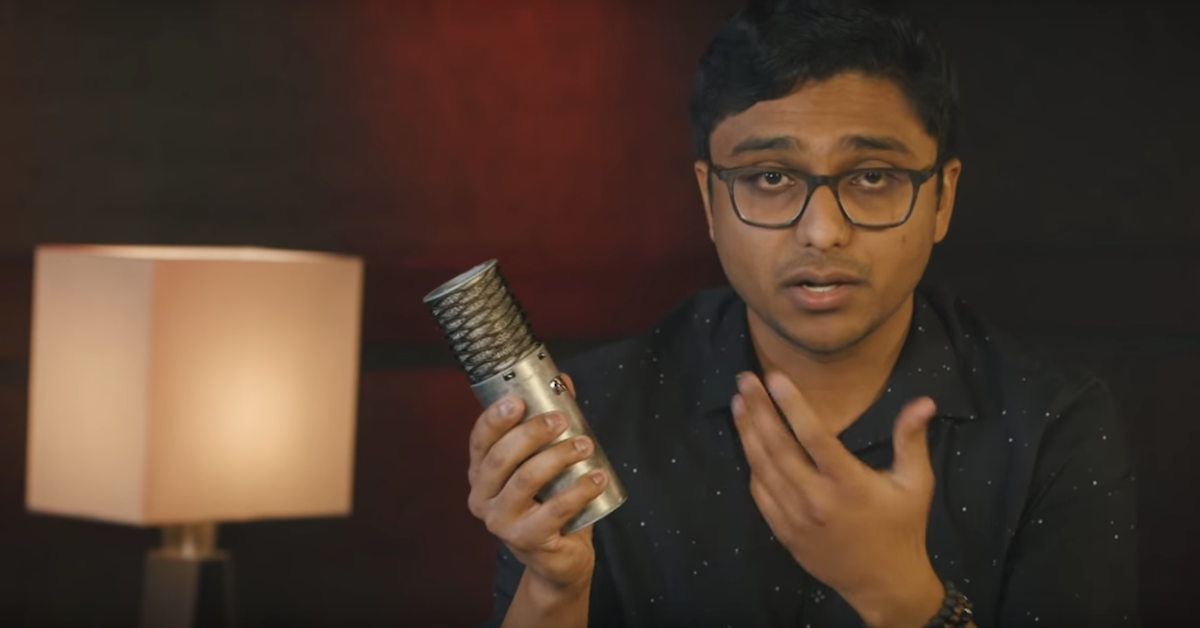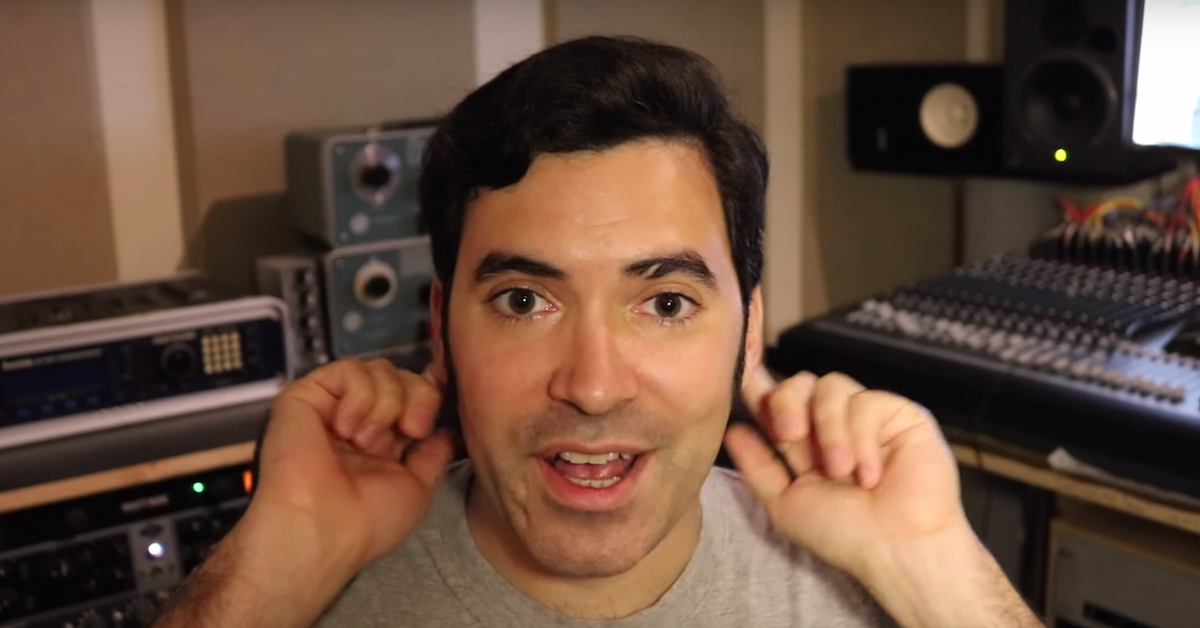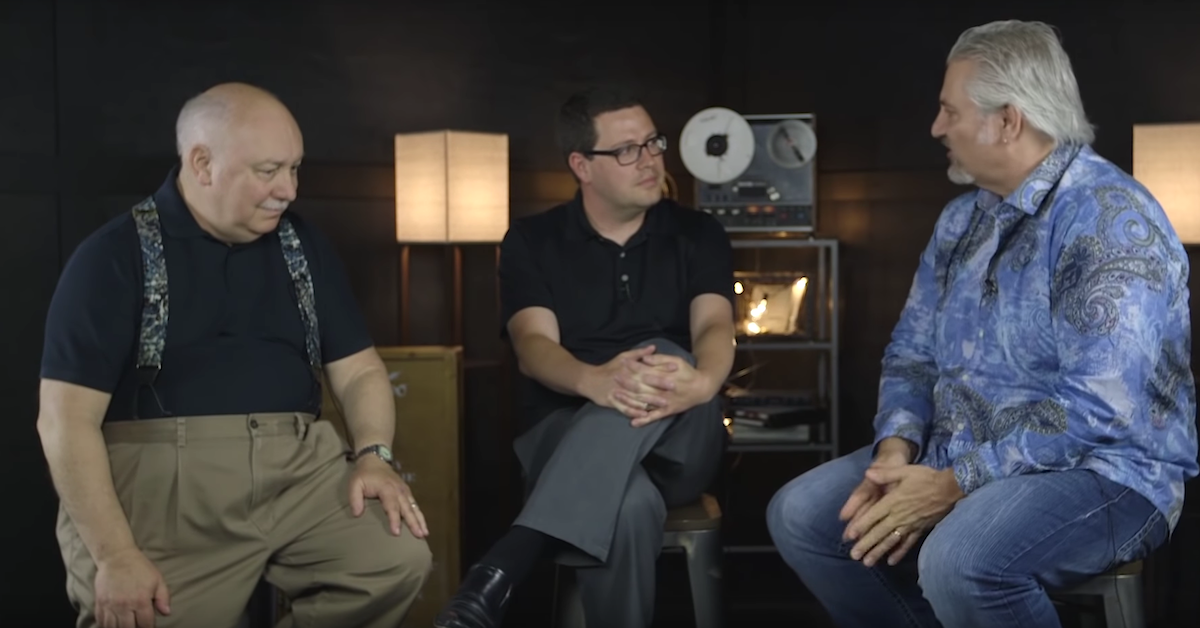How to Set Up a Home Recording Studio: A Guide to the Essentials
Article Content
Setting up a music studio at home is more attainable than it has ever been. If you’re new to recording, though, you might feel overwhelmed by the task. In this guide, I’m going to break down the essentials of a functional home studio. Before I do, though, let me make one suggestion that will guide the whole rest of the process:
Start With a Budget
This article is not going to contain any specific recommendations for studio gear, mostly for one simple reason: I can’t recommend anything without knowing how much the reader can spend. To state the obvious: nicer, better sounding gear does tend to cost more money. Does that mean you need to spend as much as possible on everything in your studio? Definitely not! Before you click “checkout” on any new purchases, take some time to think about how much you can really spend on the whole shebang. If you’re unsure, make an educated guess, and see what that gets you. Keep in mind: a studio is the sum of its parts — no single piece of kit will define the quality of your work.
With that in mind, here’s a breakdown of what you’ll need:
Computer
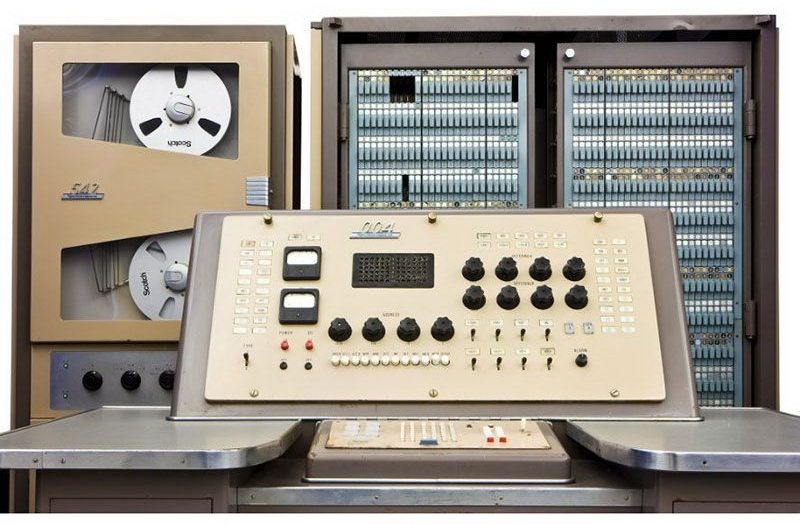
A good studio computer should be larger than your kitchen, and have at least 8 knobs 🙃
Your computer is the heart of your home studio setup. It will be involved in every project you work on, doing multiple jobs simultaneously — recording and playing back audio, triggering software instruments and running effects plugins. It’s also what you’ll use to seek the fountains of recording wisdom available on sites like this one when you get stumped. It will basically determine the amount of work you can get done and your quality of life while you’re working. Whatever computer you use, make it a good one.
Ok, so what do I mean by “good one?” I’d argue there are three major variables to consider: processing power, RAM and the internal storage drive. In the interest of having this article remain relevant for at least five minutes after writing it, I’m going to avoid using specific numbers for processor power and memory, but some general principles apply.
With regard to processing power, I’d opt for something with multiple cores. RAM is also going to impact performance in a big way. The minimum amount of RAM available on a new computer is almost certainly not enough for a home studio. As for the storage drive, you’ll ultimately be using more than one to work with, but your internal drive will still be running your DAW and effects plugins. I’ll say this now, and I’ll say it again later: you have no excuse not to be using solid state drives. Yes, they’re more expensive than moving hard disc drives. They’re also faster and more reliable.
It’s also important to make sure your computer provides enough connections for external hardware to meet your needs. A typical studio computer will need connections for an audio interface, one or more monitors, at least one external storage drive and a MIDI controller. That’s at minimum.
When choosing a computer, it’s wise to push yourself a bit past what you think you need. Today’s bare minimum is not going to be enough in five years. And yes, you should be trying to get a computer that still serves your needs in five years.
DAW
Ok, now that you’ve got your computer, you’re going to need some software that can be used to make music. That would be your DAW — Digital Audio Workstation. Some popular options include Pro Tools, Logic, Ableton Live, Cubase, Audition, Reaper, Audacity, and Garageband.
I am not interested in arguing that one DAW is objectively better than another. And let’s get clear on one thing right now: any DAW in and of itself does not sound better or worse than any other. I have heard mixes that were ruined by all kinds of issues and mistakes, and I promise you that not once was the DAW the problem.
That said, different DAWs do have their strengths and weaknesses. My colleague Ian Vargo wrote an excellent guide to choosing the right DAW that I suggest checking out.
Monitor Speakers
Besides your computer, your main studio monitors are the most important piece of gear in your studio. They will affect every single choice you make, and you need to be able to trust them.
Which monitors are “right” for you depends on a lot of factors, and most crucial is your budget. Monitor speakers tend to sound better and be more reliable the more you spend on them, but it’s entirely possible to spend way too much money on monitors that aren’t right for you. Think seriously about how much you can spend and then look at what sort of options you have.
I personally believe that, for your first studio at least, you should be spending more on your monitor speakers than any other single piece of gear besides your computer. Yes, that might mean that your first studio has somewhat sub-par mics, preamps or converters. That’s fine.
Here’s the thing: no piece of gear or software possesses any kind of magic that will make a recording sound great if you can’t actually hear the details of what it’s doing. You’ll learn more about just what makes something sound good if you’re listening on speakers you can trust. That statement goes double if you can work on those speakers for long enough to understand their quirks and character.
Acoustic Treatment
Good acoustic treatment is an often overlooked element of many home studio setups, but it is crucial to getting the most out of your monitors.
Because there’s often confusion about what exactly “acoustic treatment” means, let me clarify: acoustic treatment is something completely different from “soundproofing.” The former is about controlling the way sound behaves within a room, the latter is about keeping sound from getting in or out. To go a bit further, “soundproof” is really kind of a misnomer, and “sound isolation” is a more accurate term. It’s very hard to completely isolate sound in a room to the point where you’d call it “soundproof.” And realistically, if you rent the space where you’re setting up a studio, there’s little you can do to isolate it without seriously pissing off your landlord.
Bass and low-midrange frequencies are often the biggest problem areas in home studios. Focus your acoustic treatment so that it mitigates your biggest problem areas. If your “acoustic treatment” looks like a mattress topper or something you’d use to pack eggs (see below) it probably isn’t doing much to help your mixes. My colleague Phil Mantione wrote a very helpful guide to home studio acoustics, which is worth a read, especially if this is a new subject for you.
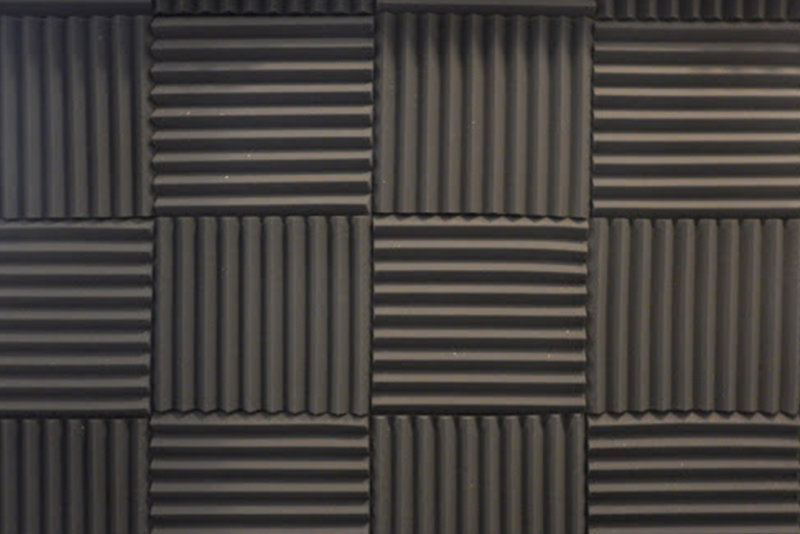
This stuff will not make a room “soundproof,” and it isn’t even great acoustic treatment
The good news is that there are no shortage of plans for cost effective, DIY acoustic treatment panels that just about anyone can build (credible acoustic treatment builds typically make use of rigid fiberglass like Owens Corning 703 and Rockwool). And if using a drill scares you, there are still plenty of excellent ready-made panels that can get your home studio sounding right.
If You’re Still Struggling
Some readers may have already tried acoustic treatment for their studios with disappointing results. If that’s you, don’t get disheartened. There’s a reason good acousticians collect hefty fees for tuning studios — properly treating a space is really hard! Fortunately, room correction software like Sonarworks SoundID Reference can help you get a surprisingly accurate frequency response from your studio monitors under less than ideal conditions. Sonarworks learns the quirks of a mix room and creates an EQ profile to counteract them, giving your monitors a flat, clear frequency response. In my experience (I’ve been a user for a few years now) it works best when a room has been treated to mitigate the most obvious acoustic issues like resonances and flutter echo. I started using Sonarworks in an acoustically treated (but still imperfect) room and immediately found that I could trust my monitors in a way I never had before.
Headphones
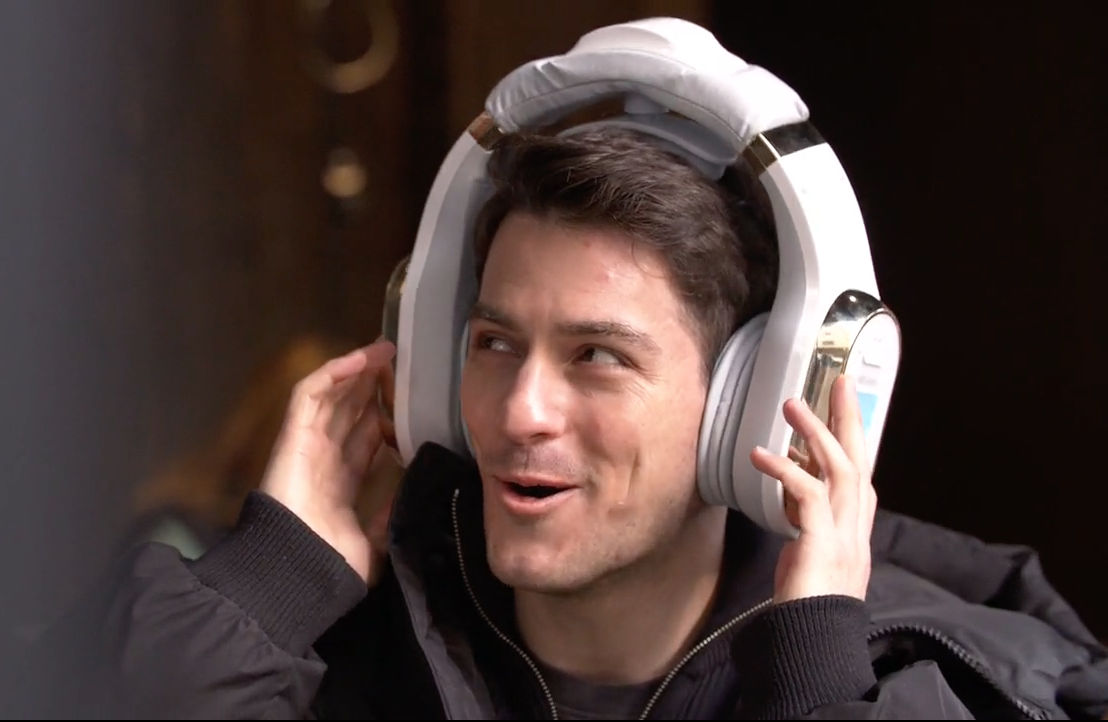
Yeah, not quite…
Even with a pair of monitor speakers you like and work well with, headphones are almost certainly a necessity for a home studio. In addition to being a valuable reference point for checking mixes, headphones are more than likely going to be necessary for doing overdubs.
If you plan on using your headphones to mix, a good pair of open-back headphones will give you a better picture of what’s going on. Closed-back headphones, on the other hand, will be more effective at containing bleed when doing overdubs.
Audio Interface
Behind the computer and monitor speakers, your audio interface is the next most important piece of gear in your studio. It’s the hub that connects the computer, monitors, microphones and DI instruments.
Which interface is right for you depends entirely on what you plan on doing in your studio. If you’re recording a live band, or even just a drum kit, you’ll need something with several inputs (and mic preamps). If you plan on recording only vocals, an interface with lots of ins and outs might not be necessary. And if you make music entirely in-the-box, you might only need something like a reliable D/A converter to get your mixes out to your monitor speakers.
Think about what kind of inputs and outputs you need in an interface, and see what kind of options are available in your budget. You might be surprised at how many choices you have even if money is tight!
Higher-end interfaces tend to feature better mic preamps and converters, and those can make a huge difference in the quality of the recordings you produce. That said, don’t trip out if you can’t afford the best of the best, especially if you’re setting up your first home studio. I would rather have a computer that will go the distance and an interface I’ll likely outgrow than the other way around.
External Solid State Drive
There are two parts to this point. First: you will need an external storage drive. Second: that external drive really should be solid state (SSD). Even if there’s a ton of room on your computer’s internal drive, you’ll find things work more smoothly if you’re running software on one drive and recording/playing back audio from another.
Drive speed can be a bottleneck in computer performance that many people ignore. Not only do SSDs tend to be faster than their moving-disc counterparts, they will outlast them by years. Yes, you’ll have to pay more for the same amount of space. But when your disc drive crashes, and you’re waiting to hear back from a data recovery place, I promise that you won’t care.
Desk Setup
I’m including a few, fairly boring items in one category. When I say “desk setup,” I mean everything on your desk that is not specifically for making music. That includes the desk itself, the chair, mouse, computer keyboard and monitors (as in screens, not speakers).
Making music in a studio involves working long hours. If your desk or chair are uncomfortable, if your mouse or keyboard causes hand or wrist issues, or if your monitors make you squint or strain, chances are you’ll have a hard time staying sharp for an entire session.
An Appropriate Amount of Microphones
How many mics and which ones will constitute an “appropriate” mic locker depends on what you’re trying to do in your studio. Recording any kind of live ensemble will require a greater number and variety of mics compared to tracking just a vocalist over a beat.
Do I have opinions about mics for, say, drum overheads, guitar cabinets or vocals? You bet I do. Is this article the place for them? Nope. Figure out how many mics you need for your studio and see what your budget will allow you to get.
Ok, if you absolutely must read hot takes about microphones: I’ve written about a couple of my favorite mics for this site (AKG C414 and JZ Amethyst). If your tracking space doesn’t sound so great, a good dynamic mic like a Shure SM7B or Electro-Voice RE20 will hide the imperfections of the room better than a condenser will.
By the way — “going big” on a mic at the expense of budgeting for other, more foundational equipment is likely not to go well. Believe it or not, a $3000 mic can still sound cheap. Try using one to record in an awful sounding room, or mixing the recording on earbuds to find out how!
A Quick Thought on USB Mics
An increasingly common item in home studio setups is the USB mic, and some readers might be considering one. USB mics are basically a couple pieces of hardware in one package: a microphone and an interface rolled into one.
What that means is that USB mics are meant to be used standalone — not with an audio interface. They are ideal for podcasters or anyone who needs to record only one track at a time, on a tight budget. They aren’t great investments for serious studios.
MIDI Controller
For the uninitiated: MIDI is a protocol that was developed in the 1980s that allows computers and electronic instruments to communicate. There’s an interesting story there, but the short version is that MIDI proceeded over the following decades to change the way music is made (here’s Philip Mantione again with a deeper dive). A MIDI controller, then, is a piece of hardware — usually involving a musical keyboard or percussion pads — that allows you to send MIDI data to your computer and other MIDI-equipped electronic instruments.
Your MIDI controller will be what you use to program software instrument parts, along with a number of other functions like writing automation. A MIDI keyboard may or may not be a big ticket purchase depending on how you plan to make music in your studio. I’ve had MIDI keyboards that made claims to sync automatically with various software programs, and generally found those features to be unreliable and kind of a headache. As long as you like the feel of your MIDI controller and it does what you need it to do, you’re unlikely to make a huge mistake when buying one.
Cables
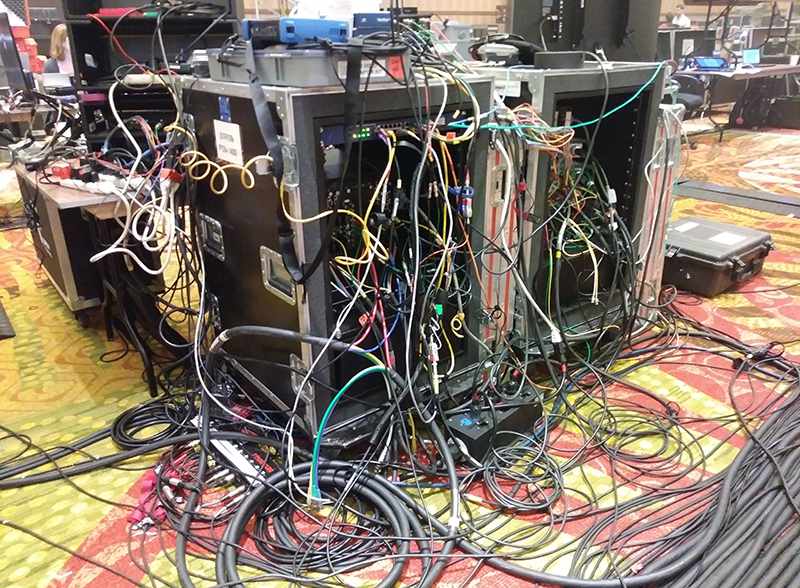
Cables are the “gotcha” pitfall of many home studios: you blow your whole budget on killer gear, and then realize you have no way to hook any of it up.
As you make your budget, make a tally of how you’ll use each piece of gear. What does it connect to? How many points of connection are there? What kind of cables (and how long) are needed for those connections?
More advanced studio setups with mixing consoles and patch bays can require a surprisingly expensive amount of cables to set up. For your first home studio, the hurt isn’t likely to be that bad — just plan for it before you’ve already maxed out your credit card.
Some Things That Didn’t Make the List
Subwoofer
Here’s a moderately spicy take: subwoofers are great for getting clients stoked when they visit your studio, but are in no way necessary for mixing low end. Don’t get me wrong — systems with lots of bass are cool! But you can learn to hear what’s going on with low end in a mix on relatively modest monitors, especially in a well-treated mix room. And without a well-treated mix room, a beefy sub is just as likely to cause problems as not.
Tape Machine
Most of my favorite records were made on tape, and I’ll be the first to admit that tape can have a certain magic that eludes digital recordings. That said, I rarely if ever work with real magnetic tape. Why? It’s expensive, it slows down sessions a lot (hello: rewinding, goodbye: quick edits), and it is in no way necessary for the work that actually helps me pay my bills.
If you’re disappointed with the quality of the recordings you’re making in your home studio, I guarantee that analog tape is not going to change that fact overnight.
For tape fetishists: there are a ton of great plugins that emulate tape machines. In fact, I wrote an article about them, and you could probably buy every plugin on that list for the price of a half-decent reel-to-reel machine.
Outboard Processing
Is there a reason that a hardware 1176 compressor costs 86 times as much as an affordable software emulation? Sure. Does that mean that getting one will make recordings sound 86 times better? I’m going to leave that unanswered.
Third Party Software
If you’ve read my articles, you know I get excited about my favorite plugins. There’s some truly great music production software out there, and you might very well make great use of some of it.
But for your first studio budget, I recommend holding off. Add software as you identify specific needs for it. Stock plugins really can get you a long way — and just like learning to play guitar on a $30 axe from a flea market, or learning to drive on a family member’s old, rusty car, learning on your DAW’s own native plugins is an important rite of passage for any new home producer.




